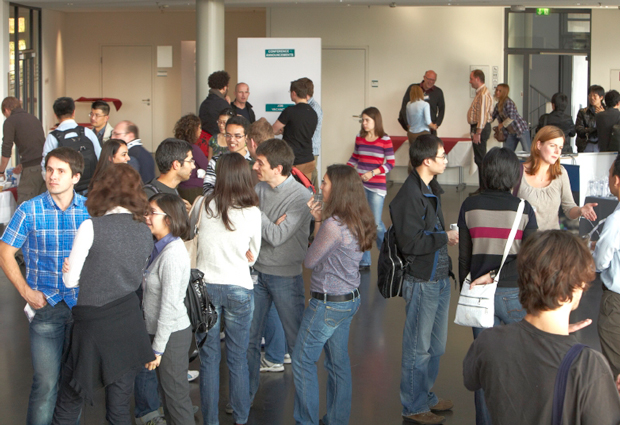
Unexpected link in protein production
Ishaan Gupta, PhD student in the Steinmetz lab at EMBL, recounts how shared interests at a conference led to a surprising discovery

Zoltan Villanyi and I, the two lead authors in a study published in Cell Reports, shared a room at a conference in Baeza, Spain, in November 2013. As we sat in the same talks, we quickly found that we had the same questions for speakers, and discovered that we’d been given spots next to each other during the poster presentation – that’s where we got really interested in each other’s work.
Zoltan is a senior postdoctoral fellow in Martine Collart’s lab at the University of Geneva, which looks at the biochemistry of how proteins bind to RNA. Meanwhile in the Steinmetz lab at EMBL we were developing high throughput methods to study interactions between RNA and proteins, so there was great synergy. Overall, we were both interested in the same questions: How does a cell quickly re-wire gene expression in order to react to short-lived stress? How is a cell able to maintain stable levels of protein production?
We stayed in touch, and began to work together the following month, exchanging a few RNA samples for sequencing. From there, the collaboration bloomed. We’d discuss the experimental design over Skype, Zoltan and his colleagues would perform experiments in Geneva and send samples for us to conduct RNA sequencing and data analysis in Heidelberg. Often that analysis would suggest a new hypothesis to test and further experiments to do, so the cycle would repeat itself. With every successful experiment we scaled up the throughput, analysing more samples and obtaining more reliable results. In the end, what we found was quite surprising.
To make proteins, cells transcribe information from DNA to RNA, and then translate from RNA to protein. These two steps happen in different locations: transcription in the nucleus, translation in the cytoplasm. People had always assumed that the two processes were independent of each other, but we found that in fact they are linked. They share a molecule that balances transcription and translation to maintain a steady level of protein production. This molecule, called Not1, controls RNA throughout its lifecycle, fine-tuning how much RNA is produced in the nucleus and how much is translated into protein in the cytoplasm.
As we share this exciting finding with colleagues in the field, I can’t help but wonder: where could my next collaboration spring from?


